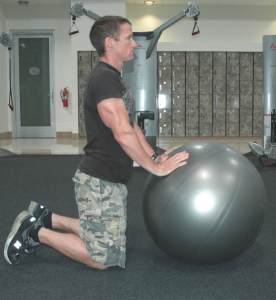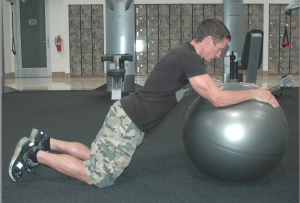 The March of the Lobsters is just a few weeks away and lobster hunters up and down the California coast are buying licenses, checking gear lists, taking refresher courses, and exercising to get in shape for lobster season. Exercising? Yes, it’s just been added to the list!
The March of the Lobsters is just a few weeks away and lobster hunters up and down the California coast are buying licenses, checking gear lists, taking refresher courses, and exercising to get in shape for lobster season. Exercising? Yes, it’s just been added to the list!
While it’s best to stay in shape year round, lobster hunters still have time to improve scuba diving fitness with this Physical Conditioning Fast Track for Lobster Season. Lobster hunting requires physical conditioning over and above that of recreational diving. Attributes of the sport combine fast and steady fin-kick swimming with bouts of rapid whole body movement, over periods of hours and often consecutive days of diving.
Enthusiastic hunters often add intensity to these physical demands by diving during inclement weather and seeking out remote hunting locations. This usually involves carrying gear for extended distances over uneven terrain and swimming in shore surge, currents and high surf. Whether diving from a boat or shore, avid hunters often press physical limits with multi-dive days of three or more dives. Since lobster season extends through the winter months, water temperature is another major toll on the diver. Further many divers who are only interested in lobster may have been inactive during the off season.
 Physical conditioning for lobster hunting combines the fitness components of aerobic, strength, balance and coordination. This is often referred to as endurance and agility. Endurance is the ability to exert oneself for an extended period of time. While cardio respiratory fitness is primary to all diving activity, long-term aerobic training can compromise strength if resistance training is not incorporated into the workout.
Physical conditioning for lobster hunting combines the fitness components of aerobic, strength, balance and coordination. This is often referred to as endurance and agility. Endurance is the ability to exert oneself for an extended period of time. While cardio respiratory fitness is primary to all diving activity, long-term aerobic training can compromise strength if resistance training is not incorporated into the workout.
The lobster hunter must combine cardio respiratory fitness and muscular strength when training for endurance. Agility describes balance and coordination, which are important when changing directions and accessing tight locations such as rocky crevices, ledges and holes where lobsters are found. Improved mental acuity and hand-eye coordination are added benefits of physical conditioning suited to lobster hunting.
Physical Conditioning Check List for Lobster Hunters
Participate in aerobic exercise five to six days a week for 45 minutes or more. The length of the exercise session is important. Lobster hunters must extend aerobic training beyond 40 minutes and increase frequency to develop endurance. Generally speaking, the purpose of aerobic exercise for cardio respiratory fitness is to maintain and improve the efficiency of the heart, lungs and vascular system. Greater oxygen demand is created through exercise by moving primarily the large muscles of the body repeatedly and rhythmically at a particular intensity beyond usual activity of rest or relaxation. Repeated and regular aerobic exercise causes permanent favorable changes in health and performance, strengthens the heart, improves the ability of the body to transport and utilize oxygen, and is also beneficial for weight loss. Results are apparent within weeks. Examples of aerobic exercise are walking, jogging, running, swimming, rowing, cycling, jumping rope, aerobics classes, and dancing.
Aerobic exercise may be performed outdoors almost anywhere and indoors where fitness centers and home gyms provide equipment such as treadmills, stair climbers, ellipiticals and exercise bikes. The lack of aerobic exercise or physical inactivity is one of the major risk factors for heart disease. Conversely, aerobic exercise helps to prevent heart disease, high blood pressure, high cholesterol and may help repair the damage from smoking.
Maximize aerobic endurance training with heart rate training zones.
Lobster hunters can maximize the benefits of aerobic training by establishing heart rate training zones. The 70% heart rate training zone primarily improves the ability of the muscle cells to utilize oxygen. This zone trains the heart to pump more blood, metabolizes stored body fat as the primary source of energy, is preferred for weight management, and is a healthful intensity in preparation for moderate scuba diving conditions.
The 80% zone is most effective for overall cardiovascular fitness and improving the ability of the body to transport oxygenated blood to the muscle cells and carbon dioxide away from the cells. This zone is also effective for increasing overall muscle strength. A training zone of 80% of your maximum heart rate is similar to the work of swimming against a moderate current. For divers with heart conditions, measuring maximum heart rate is recommended by taking a max stress test administered by a physician. Otherwise, the most respected fitness standard for calculating training heart rate zones is the Karvonen Formula.
Upon waking in the morning, before getting out of bed, obtain resting pulse by placing two fingers under the back corner of the jaw (on the carotid artery) and counting the heartbeat for one minute. This number is the Resting Heart Rate (RHR). Use it to perform the Karvonen calculation. An example of the Karvonen formula for a 45-year-old diver with a RHR of 68 beats per minute, looks like this: 220 – (AGE) 45 = 175; 175 – (RHR) 68 = 107; 107 x 70% = 75; 75 + (RHR) 68 = 143 (THR). Using this example, the diver while training in the 70% heart rate training zone, will attempt to maintain a minimum pulse of 143 beats per minute. The 80% heart rate training zone provides a maximum pulse of 154 beats per minute.
Combine strength training with aerobic exercise.
Perform strength or resistance training two to four times each week for at least 30 minutes. Lobster hunters develop endurance best by combining resistance training with aerobic exercise in the same workout session. Use sets and repetitions or alternate aerobic and resistance training in timed increments or intervals. Placing demands on the body with resistance training is the only way to maintain, prevent loss and add more muscle. Muscle performs, supports and protects the body throughout all movement stabilizing joints and protecting the skeleton. Muscle burns calories. Examples of resistance training include weight lifting, elastic bands, static contraction and body weight movements such as calisthenics, and specialty courses like Pilates. Resistance training may also be performed outdoors. Fitness centers and home gyms provide equipment such as modular machines, cables, towers and free weights.
Focus on the legs, back and abdominals.
For the short-term, lobster hunters will benefit most from exercises for the legs, back and abdominals. The following exercises synergistically combine these muscle groups and emulate movements of the body while diving. The Dolphin integrates low back, hamstrings, gluteus and abdominal muscles in a prone position using the lower body as resistance instead of the upper body. Walking backwards, kicking through strong currents, turtle swimming, wave action, surf and sand are all conditions where this exercise will enhance performance and prevent injury.
The Wall Sit with the Ball Squeeze combines all major muscles of the legs and buttocks along with the abdomen and low back. It is foundational in nature and recommended as an alternative to the squat to reduce risk and accommodate certain knee and back conditions. It may be performed anywhere in lieu of a leg press machine. The ball used here is a weighted medicine ball. Direct advantages include all movements under the load of gear, especially standing from a seated position, and climbing a boat ladder or steps.
Add calisthenics, ball exercises and balance boards for balance and agility.
Many sports and rehabilitation programs incorporate exercises of this type to improve proprioception and response time. Lobster hunters benefit from improved proprioception with increased perception and awareness from within the body to recognize changes in equilibrium, position, orientation, posture and movement of the body. Agility, balance, hand-eye coordination and mental acuity help the lobster hunter to quickly access and react. The Ball Reach provides a unique combination of abdominal, low back, hamstring and gluteus (buttocks) strength. This exercise also includes some integration of static chest and shoulder. Swimming, staying in one place during strong currents, putting on fins in the water, and back-roll entry are just a few examples that contribute to diving.
—————————————
Our health & fitness section is written by Gretchen Ashton. Check out her website at scubafit.com!
